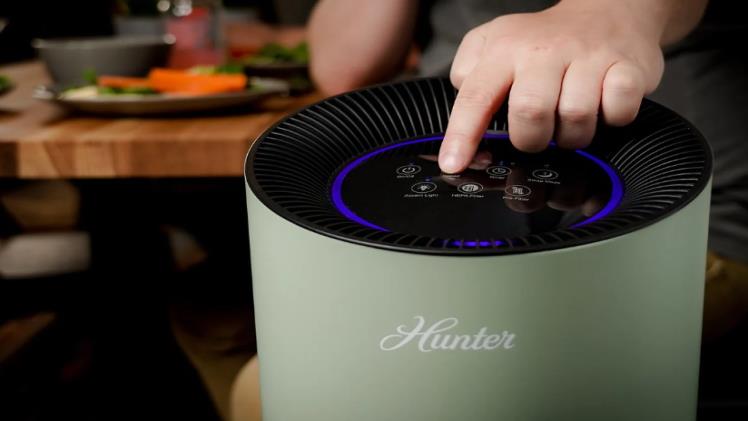In recent years, the demand for air purifiers has surged as people become increasingly aware of the impact of air quality on health. With this growing concern, one crucial question arises: Are there any government standards for US-manufactured air purifiers?
Air purifiers have become a staple in many households, promising cleaner and healthier indoor air. This is especially relevant in the context of rising pollution levels and the need to create a safe haven within our homes. In this article, we will delve into the landscape of air purifiers in the United States, exploring the existence of government standards and their implications.
Discover the best Made in USA air purifiers and get to know these innovative devices by clicking on the following link: “Made in USA Air Purifier: Getting to Know the Devices.
The Need for Government Standards
The necessity of air purifiers adhering to specific standards is multi-faceted. Primarily, it sets a foundational benchmark for product quality, providing consumers assurance that the purchased devices conform to designated safety and efficiency standards. This assurance, in a reciprocal manner, cultivates trust and confidence within the market. The establishment of these standards isn’t merely a bureaucratic formality; it serves as a bedrock for consumer confidence, offering a level playing field where individuals can be certain that the air purifiers they invest in are not only reliable but also meet the necessary benchmarks for safety and efficacy.
Current State of US-manufactured Air Purifiers
Presently, the landscape of air purifiers in the United States is marked by diversity, featuring a plethora of manufacturers presenting an extensive array of products. Nonetheless, the lack of standardized government regulations prompts inquiries into the uniformity and dependability of these devices. This absence of a unified framework raises valid concerns regarding the consistency and reliability of air purifiers across the market. In the absence of comprehensive standards, consumers may face challenges in assessing the efficacy and safety of various products, underscoring the need for a cohesive regulatory approach to ensure the quality and reliability of air purification solutions.
Importance of Standardization
Standardization transcends mere bureaucratic protocol; it stands as a linchpin in elevating the quality of air purifiers. The implementation of standardized products is more than a regulatory necessity; it is a guarantor that consumers procure devices that are both efficient and secure. This commitment to standardization is instrumental in cultivating a healthier indoor environment, emphasizing the integral role that standardized air purifiers play in enhancing air quality and promoting the overall well-being of individuals within their living spaces.
Regulatory Bodies Involved
A multitude of government entities holds the responsibility for overseeing air quality and, by extension, the realm of air purifiers. These agencies assume a pivotal role in not only formulating but also enforcing standards to ensure the protection of public health. Their significance lies in the establishment of robust guidelines that address the diverse aspects of air purification, contributing to a framework that prioritizes the well-being of the public. Through their regulatory actions, these government agencies act as guardians, upholding the standards that are fundamental to fostering a healthy living environment for the populace at large.
Existing Standards for Air Purifiers
Currently, there may exist certain standards, yet a thorough evaluation is necessary to gauge their comprehensiveness and efficacy. Delving into the intricacies of these existing standards is pivotal for comprehending the extent of protection they afford consumers. This examination is not only a regulatory formality but a critical step in ensuring that the established benchmarks effectively safeguard the well-being of consumers. Assessing the scope and effectiveness of these standards provides insights that are instrumental in shaping the trajectory of air purifier regulations, fostering an environment where consumers can trust in the reliability and efficacy of the products they choose.
Challenges in Establishing Standards
The creation of standards is indispensable but not without its challenges. Striking a delicate balance between nurturing innovation within the industry and upholding safety measures constitutes a complex undertaking. This intricate task demands a collaborative effort between manufacturers and regulatory bodies. Achieving consensus on standards involves navigating the dynamic landscape of technological advancements while prioritizing consumer safety. The synergy between innovation and safety is crucial for crafting standards that not only keep pace with industry evolution but also ensure the well-being of consumers in the ever-changing landscape.
International Comparisons
Beyond national borders, the comparison of US air purifier standards with international equivalents is crucial. A comprehensive analysis of how the United States positions itself globally in terms of air purifier regulations offers invaluable insights. This comparative examination not only identifies potential areas for enhancement but also sheds light on best practices globally. By understanding the global landscape, policymakers can pinpoint effective strategies, fostering a continuous improvement cycle in air purifier standards. This proactive approach ensures that the United States remains aligned with international benchmarks, contributing to a harmonized, elevated standard for air quality and purifier efficacy on a global scale.
Consumer Awareness
Empowering consumers begins with knowledge. A well-informed consumer possesses the tools to make sound decisions. Therefore, public education on the critical significance of selecting air purifiers in alignment with recognized standards becomes paramount. This education isn’t merely about compliance but emphasizes the broader goal of fostering a healthier living environment. By illuminating the importance of adhering to established standards, the public is equipped to navigate the market with discernment. In this way, consumer awareness serves as a catalyst for promoting a collective commitment to healthier indoor air, creating a symbiotic relationship between informed choices and a more robust, safer living space.
Future Trends in Air Purifier Standards
Advancements in technology usher in a realm of possibilities for elevating air purifier standards. The continuous evolution of regulations presents an opportunity to delve into forthcoming trends, offering valuable insights into the trajectory of the industry. By examining these future-oriented developments, we gain a clearer understanding of the direction air purifier standards are taking. This foresight not only anticipates the industry’s response to emerging technologies but also underscores the proactive measures in place to adapt standards, ensuring they remain robust and relevant amidst the ever-changing landscape of technological progress.
Industry Response to Standards
Manufacturers assume a pivotal role in both the formulation and adherence to standards. An insightful examination of how the industry responds to regulatory mandates offers a glimpse into its dedication to ensuring consumer safety. This entails not only meeting legal obligations but also underscores a commitment to proactively contribute to the well-being of consumers. Understanding the industry’s response to regulations provides a transparent view of its ethos, emphasizing the significance placed on product safety and adherence to established benchmarks within the dynamic landscape of air purifier manufacturing.
Recommendations for Consumers
Navigating a market characterized by diverse standards necessitates empowering consumers with guidance for prudent decision-making in air purifier selection. Offering insights into evaluating product specifications becomes integral, equipping consumers with the tools to discern the efficacy of devices. Additionally, emphasizing the importance of compliance contributes to an informed consumer base, promoting awareness of the standards that ensure the safety and effectiveness of air purifiers. This guidance fosters an environment where consumers make choices aligned with their specific needs and expectations.
Public Opinion on Standardization
Public sentiment frequently plays a pivotal role in shaping regulatory determinations. Analyzing the general outlook regarding air purifier standards is instrumental in pinpointing potential issues and misunderstandings that warrant attention. Understanding the concerns and misconceptions within public opinion enables a more informed approach to regulatory adjustments, fostering a responsive system that aligns with the evolving needs and expectations of consumers.
Potential Benefits for Manufacturers
Ensuring conformity with established standards goes beyond mere regulatory compliance; for manufacturers, it represents a strategic maneuver. Embracing these standards not only meets legal requirements but also functions as a deliberate step to elevate brand standing, cultivate consumer confidence, and bolster competitiveness within the market. Adhering to such benchmarks is a proactive stance, underscoring a commitment to product excellence and safety. This strategic alignment with standards not only fulfills regulatory obligations but serves as a powerful tool for manufacturers to carve a reputable niche, instill trust among consumers, and thrive in the competitive marketplace.
Conclusion
In conclusion, the absence or presence of government standards significantly impacts the air purifier market in the United States. As consumers increasingly prioritize indoor air quality, the need for robust standards becomes paramount. It is not just a regulatory formality but a fundamental requirement for ensuring the safety and effectiveness of air purifiers. As we navigate this landscape, both consumers and manufacturers must actively participate in the dialogue surrounding standards to create a healthier and more reliable market.





